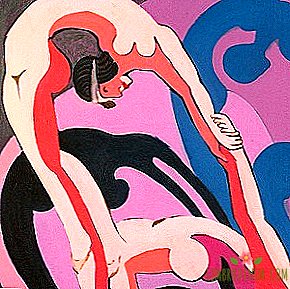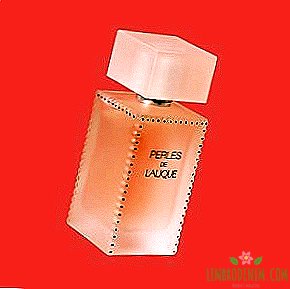Story of one brand: Judy Blame jewelery
IN THE LIGHT THERE IS A GREAT GRADEthat we love from and to - with all their ups and downs. We hunt for their stuff, ready to buy all the rail on the sale and look forward to showing new collections. It's time to figure out what the phenomenon of their attractiveness. This week, we are not just talking about the iconic British jewelery brand Judy Blame, but about the whole era behind it.

About Judy Blame is not written at all in the Russian press, and his jewelry in Moscow is still impossible to find. Meanwhile, in the West, the name of this designer is associated with an entire era of the 80s, which has become an aid for the formation of a modern counterculture with independent magazines and stamps. Judy Bleim is a British legend. He, like many representatives of his era, was engaged in everything at once: he was a designer, art director of the magazine, a video director and, of course, a stylist. First of all, however, Judy is known for his massive jewelry, reminiscent of the madman’s handicrafts, which he deftly constructed from various materials at hand found in the adjacent trash can or at the bottom of the Thames: buttons, clips, coins, chains, champagne plugs, feathers , buttons, metal caps from soda, razor blades, whistles and pins. Judy's handwriting is that from cacophony, anarchy and chaos, he created order overnight.
Blame's real name is Chris Barnes. However, around him, everyone invented pseudonyms for themselves. Chris chose the one that reminded him of the names of actresses from trash films of category B. He ran out of a house in the south west of England at 17 to become a punk and wander around Manchester's dents and squats, following the shadow of Malcolm McLaren’s 70s. move to London and join the "new romantics" who hung out at Taboo and Heaven in Soho. Judy Blame's work was strongly influenced by his anarchic punk past, as well as the club get-together of the 80s, to which he belonged. It was the Buffalo group, formed by Ray Petri, one of the most influential London stylists in London., who owned a small shop with decorations on the vintage Camden Market in London and collaborated with the counterculture magazines that appeared only in the early 80s: The Face, i-D and Arena. The Buffalo group included young photographers, models, musicians, stylists and the entire creative color of London in the 80s, including Judy Blame.


Buffalo became the continuation of the ideas of Malcolm McLaren of the late 70s - early 80s (remember the song "Buffalo Gals" of 1982) and were among the forerunners of the exaggerated fashion of the 80s and the sporting style of the 90s. They mixed wide-brimmed hats, voluminous jackets, baggy banana pants, blazers, underwear, and Levi's 501 jeans. We see all this in the shootings of buffalo boys Ray Petrie for The Face and i-D along with Mark Lebon, Jamie Morgan and other young British photographers. Ray Petri himself personified the style of buffalo, as well as one of the first to wear skirts, football leggings in the streets of London, and used street style elements (which stylists and designers do all over the place) in fashion photography. Eclecticism, which modern stylists are so fond of, reigned: he mixed things in hip-hop style with something from a punk wardrobe, Azzedine Alaïa could wear a jacket with bicycles. Today, an influential stylist who formed the first powerful fashion party in London could be 66 years old, however, Ray died of AIDS at the age of 42, not having become rich or fat. Ray had a great influence on Judy Blame, who worked shoulder to shoulder with him: Judy was the art director of iD magazine, came up with his visual concept and made covers in a collage technique (in the footsteps of Richard Hamilton) - "The Madness Issue" (March 1986) and "The Surreal Issue" (April 1988).
The main idea of Buffalo was the formation of their own tribe, a family in which everyone helped each other and spent time together under the slogan "More music, more fashion!". So, Judy Blame is close friends with the Swedish singer Nene Cherry., he met at one of the Buffalo get-togethers in 1985. Nene Cherry then wrote the generation anthem "Buffalo Stance", and in the video for the song Cherry danced in golden chains, massive earrings, golden bomber and sang: "No moneyman can win my love. It's sweetness that I'm thinking of", hinting that she is not yet a “Material girl” (the Madonna’s song of the same name was released on the album “Like a Virgin” just in 1985). For Nene Judy took a video and helped her with style, and Cherry introduced Judy to the musicians. Thanks to this friendship in the decoration of Blame at the ceremony "Grammy" Boy George appeared, the style of which the designer was engaged for a long time, and Bjork Judy liked to wear things Maison Martin Margiela. Later he was also responsible for styling the early Massive Attack clips.


Starting to make ornaments of wire and coins, which quickly diverged around the party, Judy succeeded. Although the idea was originally born for the side job because of the lack of money, but the presence of vivid fantasy in Bleim also played an important role. Together with the designers Christopher Nemeth and John Moore, Judy opened The House of Beauty and Culture (HOBAC) store in East London, which was supposed to connect the scattered Soho get-together with the raver from East London, which was a backwater at that time, where they arranged in abandoned warehouses first ecstasy parties. In addition, HOBAC was a craft store that sold only things created by hands here and now, which was already highly valued on the threshold of postmodernism. The HOBAC store made surreal advertising pictures (where, for example, a gloved hand kept pace in a shoe), in the wake of which, perhaps, Kenzo and Toilet Paper magazine are showing today, showing surreal campaigns from season to season.
Judy might seem far away from the mainstream. This is not true. Judy Blame collaborated with Ray Kawakubo, Marc Jacobs (for Louis Vuitton) and collaboration with the house of Paco Rabanne, whose archives to the young designer were close. In the 60s, Paco Rabanne was one of the first to introduce elements of industrial design into clothing design, creating dresses from rhodoid plates - plasticized acetylpulose, experimenting with fiberglass, recycled materials, aluminum jersey, making dresses from paper and casting things using Giffo technology.
After some lull, Judy Blame has returned to fashion, continues to shoot video with singer and girlfriend Nene Cherry, to produce jewelry in the same style, but not from master keys for doors, but from more noble materials. Anya Rubik is removed in Judy's jewelery, and the designer has a lot of followers who construct things from a ton of gold buttons and give them out for haute couture or are engaged in remaking things (the notorious customization). But Judy was and is a pioneer and example of a man who did something from nothing, and his biography, together with the environment in which it was formed, I think, is worthy of a screen version.




